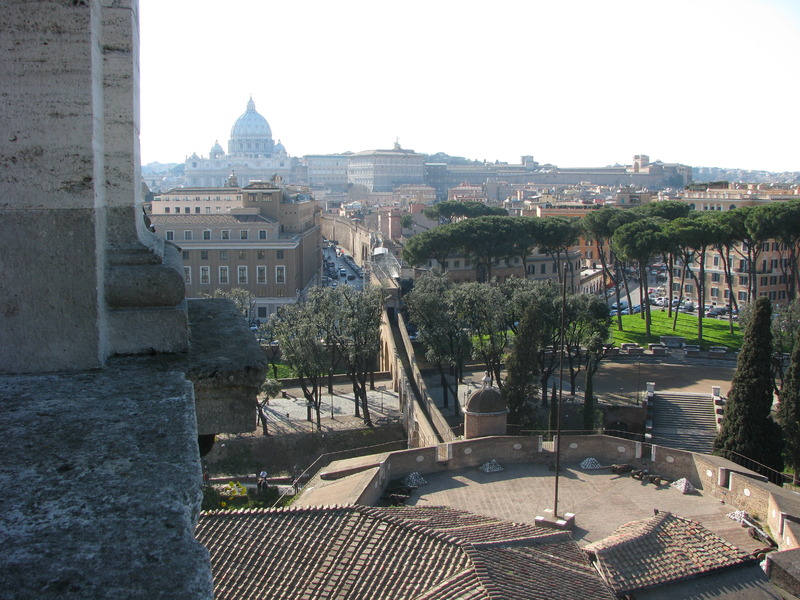Afterlife: 3rd Century to the Middle Ages
The Mausoleum's location made it an ideal structure for a fortress. Emperor Aurelian in AD 271 was the first to add fortification walls to the Mausoleum, starting to incorporated the Mausoleum into the defense system of the city.1 In the early fifth century under the rule of Emperor Honorius, the tomb was completely converted into a fortress.2
The fortress was besieged by the Goths in AD 537 during the Gothic-Byzantine war, and marble statues were thrown from the top of the castle as defense.3
Gregory was elected Pope in the 590s when Rome was devastated by plague. Pope Gregory led several processions around the streets of Rome. Legends hold that when they approached Hadrian's Mausoleum, Gregory had a vision of Archangel Michael standing on top of the tomb and protecting them. A statue of Archangel Michael was erected, and the building was named Castel Sant'Angelo. The statue in the picture is an 18th century replacement of the original one.
In 590 a small church of Sant’Angelo di Castro was constructed at the top, and the Crescenzi family replaced it with a fortification tower in tenth century.4
The castle was passed into the hands of many generations of popes, and was used as residence, fortress, prison, and court at different points.
In 14th century, Pope Nicholas III connected the castle to St. Peter's Basilica by a fortified corridor called the Passetto di Borgo.
______________________________________________________________________________
1 Penelope J.E. Davies, Death and the Emperors: Roman Imperial Funerary Monuments from Augustus to Marcus Aurelius (Cambridge University Press, 2000).
2 Nancy Thomson de Grummond, Encyclopedia of the History of Classical Archaeology, 254.
3 Ibid.
4 Davies, Death and the Emperors, 36.

